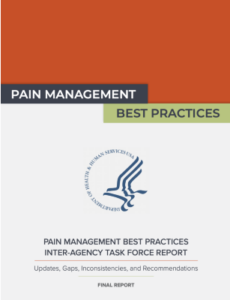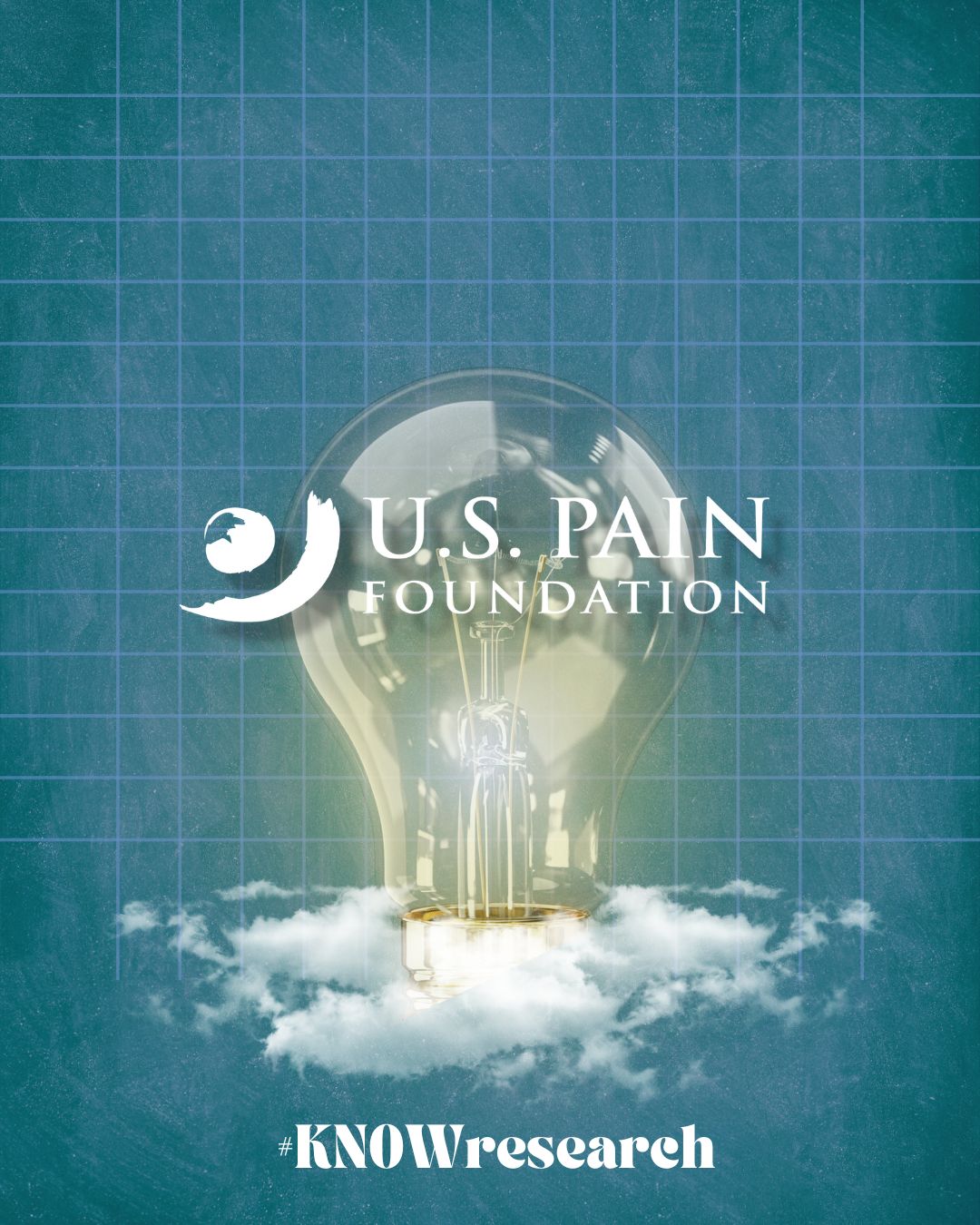Pain Management Best Practices report
A national blueprint for improving pain care
A report on how to improve pain management, mandated by Congress, is an important milestone for people with pain. But in order to move the report forward from a piece of paper to actual change, we need Congress to act.
In this toolkit, you’ll find information about:
- What’s in the report
- What people are saying about the report
- Our advocacy
- Additional resources
- Latest news

What’s in the report
 The report was developed by the Pain Management Best Practices Inter-Agency Task Force, an advisory group mandated by Congress through the Comprehensive Addiction and Recovery Act. The goal was to update best practices and recommendations on pain management for the nation. A total of 29 experts were appointed to the task force, including one patient/patient advocate representative from U.S. Pain Foundation: Cindy Steinberg, National Director of Policy and Advocacy.
The report was developed by the Pain Management Best Practices Inter-Agency Task Force, an advisory group mandated by Congress through the Comprehensive Addiction and Recovery Act. The goal was to update best practices and recommendations on pain management for the nation. A total of 29 experts were appointed to the task force, including one patient/patient advocate representative from U.S. Pain Foundation: Cindy Steinberg, National Director of Policy and Advocacy.
Key takeaways from the report:
- Pain is an enormous public health problem with profound individual and societal consequences
- Successful management of pain requires individualization of care in the selection of therapies tried, in the consideration of risks and benefits of therapies, in the duration of treatment, in the optimal dosing of medication and so on.
- Best practice in pain management is achieved through a multi-modal, multidisciplinary, integrated model of care including a full range of pharmacological and non-pharmacological treatments.
- Stigma is a major barrier to treatment, so it is critical to provide education and awareness of the underlying disease process of pain and to provide empathy and a nonjudgmental approach to treatment.
- Public, patient, and provider education is critical to the delivery of effective, patient-centered pain management and is necessary for optimizing patient outcomes.
- The risk-benefit balance for opioid management must be considered on an individual basis as there is wide variation in factors that affect the optimal dose of opioids.
- Special populations face unique and increased challenges in accessing adequate pain care, including: people of color, women, pregnant women, the elderly, children/youth, active military and veterans, individuals with sickle cell disease, and cancer patients in palliative care. These groups deserve and require specialized support and interventions.
What people are saying about the report
The report is being applauded by numerous organizations.
“It will not only improve pain care for America’s patients, but also help end the nation’s opioid epidemic.”
“The result is a series of recommendations that are thorough, well-balanced, and easily endorsed by people with pain and the organizations that represent them.”
“We commend the Task Force for this timely and comprehensive report on the gaps and inconsistencies in acute and chronic pain management.”
” The recommendations in the draft report, when implemented, will go a long way toward reducing overall opioid consumption and dependence.”
“We strongly support the draft report’s conclusion that ‘individualized, patient-centered care is vital to addressing the public health pain crisis.”
Our advocacy
- U.S. Pain encouraged its community to submit public comment throughout the report development process, and two U.S. Pain team members, Emily Lemiska and Katie Golden, participated in public meetings.
- U.S. Pain currently leads a workgroup focused on implementing the task force recommendations.
Additional resources
- The final report
- The Pain Management Best Practices Inter-Agency Task Force homepage
- A letter about the report submitted by the Consumer Pain Advocacy Task Force
- Three webinars held by U.S. Pain on the report and task force:
- Practical Pain Management: After the Task Force: “A Conversation with Vanila Singh, MD”
- Alliance for Balanced Pain Management: “Pain Management Inter-Agency Task Force Recommendations”

